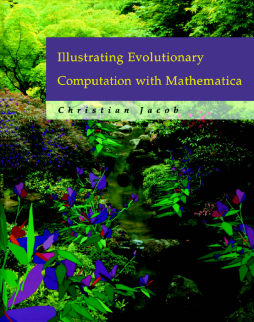
Additional Information
Book Details
Abstract
An essential capacity of intelligence is the ability to learn. An artificially intelligent system that could learn would not have to be programmed for every eventuality; it could adapt to its changing environment and conditions just as biological systems do. Illustrating Evolutionary Computation with Mathematica introduces evolutionary computation to the technically savvy reader who wishes to explore this fascinating and increasingly important field. Unique among books on evolutionary computation, the book also explores the application of evolution to developmental processes in nature, such as the growth processes in cells and plants. If you are a newcomer to the evolutionary computation field, an engineer, a programmer, or even a biologist wanting to learn how to model the evolution and coevolution of plants, this book will provide you with a visually rich and engaging account of this complex subject.
* Introduces the major mechanisms of biological evolution.
* Demonstrates many fascinating aspects of evolution in nature with simple, yet illustrative examples.
* Explains each of the major branches of evolutionary computation: genetic algorithms, genetic programming, evolutionary programming, and evolution strategies.
* Demonstrates the programming of computers by evolutionary principles using Evolvica, a genetic programming system designed by the author.
* Shows in detail how to evolve developmental programs modeled by cellular automata and Lindenmayer systems.
* Provides Mathematica notebooks on the Web that include all the programs in the book and supporting animations, movies, and graphics.
"This book provides a thorough survey of evolutionary computation techniques, including genetic algorithms, genetic programming, evolutionary programming, and evolution strategies. The author uses mathematica to illustrate the examples. If you know mathematica, you'll find this unique angle to be invaluable, but even if you don't know mathematica, if you're familiar with any programming languages, or matlab, maple, etc., you should be able to make the connections. The figures in this book have to be the most illustrative examples offered in any evolutionary computation text to date. The text is easy to read and very informative." -- Review in IEEE Computer Magazine, June issue.*5* star amazon.com review
